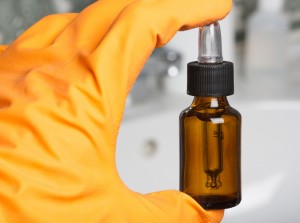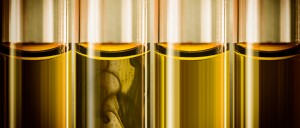 What is viscosity? In simple terms, viscosity is a measure of a liquid’s resistance to flow, or the measure of internal friction. What causes viscosity is the cohesive forces between molecules in the fluid.
What is viscosity? In simple terms, viscosity is a measure of a liquid’s resistance to flow, or the measure of internal friction. What causes viscosity is the cohesive forces between molecules in the fluid.
If you set a ship in motion it would eventually come to a halt because of the viscosity of the water, which resists the flow of the boat. That is, unless a propeller is attached to propel or push the ship forward, or you could also create this same push manually with an oar.
At low viscosities, fluids will flow with greater ease. A familiar example would be liquids such as water and alcohol. At high viscosities, fluids are going to flow and move much slower, a good example would be a gel, lotion, or even thicker peanut butter type consistency.
Water-Like, Semi-Viscous and Viscous
These are the three main terms used to describe the viscosity of a liquid.
• Water-Thin – Considered to have free flowing characteristics, such as perfumes/colognes or obviously water.
• Semi-Viscous – Maple syrup or soybean oil that is a bit thicker in nature.
• Viscous – Hair gel or pastes which are thick and do not move easily.
While water-like, semi-viscous, and viscous are good terms to use sometimes you need to get more specific about the viscosity of a fluid. The measurement we use to describe the viscosity of a fluid is known as centipoise.
What is Centipoise?
Centipoise (CPS) is the viscosity value that is assigned to liquids. It is a unit of dynamic viscosity, the typical type of viscosity we think of.
A fluid with a low centipoise will flow and move easily and fast. A rating of a higher centipoise is going to flow much slower. See the centipoise ratings below to see.
Centipoise Ratings
Liquid Centipoise (cp) Viscosity
- Peanut Butter – 250,000 – Viscous
- Tomato Paste – 190,000 – Viscous
- Petroleum Jelly – 64,000 – Viscous
- Ink (paste) – 45,000 – Viscous
- Oil-SAE – 140 2,200 – Viscous
- Shampoo – 800 – 1,000 – Viscous
- Hand/Body Lotion – 700 – Semi-Viscous
- Plastisol – 700 – Semi-Viscous
- Oil-SAE 90 – 590 – Semi-Viscous
- Spar Varnish – 420 – Semi-Viscous
- Soybean Oil – 160 – Semi-Viscous
- Mable Syrup – 144 – Semi-Viscous
- Oil SAE 20 – 125 – Semi-Viscous
- Corn Oil – 72 – Semi-Viscous
- Liquid Ink – 25 – Viscous
- Colognes/Perfumes – 1-7 -Viscous
- Water – 1 – Viscous
- Sulphuric Acid – 0.2 -Viscous
Many of these products you probably use in your daily life. Now you know the centipoise rating of these fluids.
 Measuring Viscosity
Measuring Viscosity
To get a general viscosity rating of a liquid, you can use a simple measuring technique.
The process and tools you need are fairly basic. All you need is a glass or plastic tube, steel or marble balls, a stopwatch, and a liquid. You fill the fluid into the tube, drop the ball into the tube, and you measure the time it takes for the ball to drop to the bottom of the tube.
The faster the ball drops, the lower the viscosity rating. The slower the ball drops, the higher the centipoise rating. This is a simple way to get a viscosity measurement and something you can do at home.
Viscometer
You can purchase a precise measuring device called a viscometer, which measures the force necessary to move through a liquid.
There are several types of viscometers which are used to determine different types of viscosities. This includes falling-piston, oscillating-piston, vibrational, rotational, electromagnetically spinning-sphere, bubble, and rectangular-slit. The falling-ball viscometer is another type which works on the measuring principle we described above.
Temperature affects Viscosity
Temperature can change the viscosity of a liquid.
Typically if the temperature of a fluid goes up, the viscosity of a fluid goes down. When the temperature of the fluid goes down, the viscosity of fluid goes up.
A good example of this would be honey and maple syrup which would become less viscous if you heated them up.
This is why when filling a liquid that has a high viscosity rating, it is heated before being filled. This speeds up the filling because it flows better and it fills fasters.
So what is Viscosity?
Now if anyone asks you what, “What is viscosity?” you will know what to say and can even tell them about the centipoise rating of something like peanut butter. There may still be a quiz forthcoming… so remember, peanut butter encompasses a 250,000cp rating. If you remember from the chart above, it’s the highest centipoise rating available.
Never thought the liquid packaging industry had so many complexities, did you? Whether you’re filling a water-like, semi-viscous, or viscous/extremely viscous liquid product, this absolutely impacts your available options as it comes to liquid filling. We wish you the best of luck and remember to use the centipoise rating system!
Liquid Filling Specialists
For over 70 years, FILAMATIC has provided a wide range of liquid filling machines to the packaging market. We create flexible, customized solutions for every stage of your business growth. Whether you require a single machine, a complete turnkey fill-cap-label solution, or a fully automated, integrated Monobloc system, we have the liquid filling experience for your project.
For more information on liquid filling, capping, and labeling solutions, please call 866.258.1914 or visit – www.filamatic.com/contact-us.
